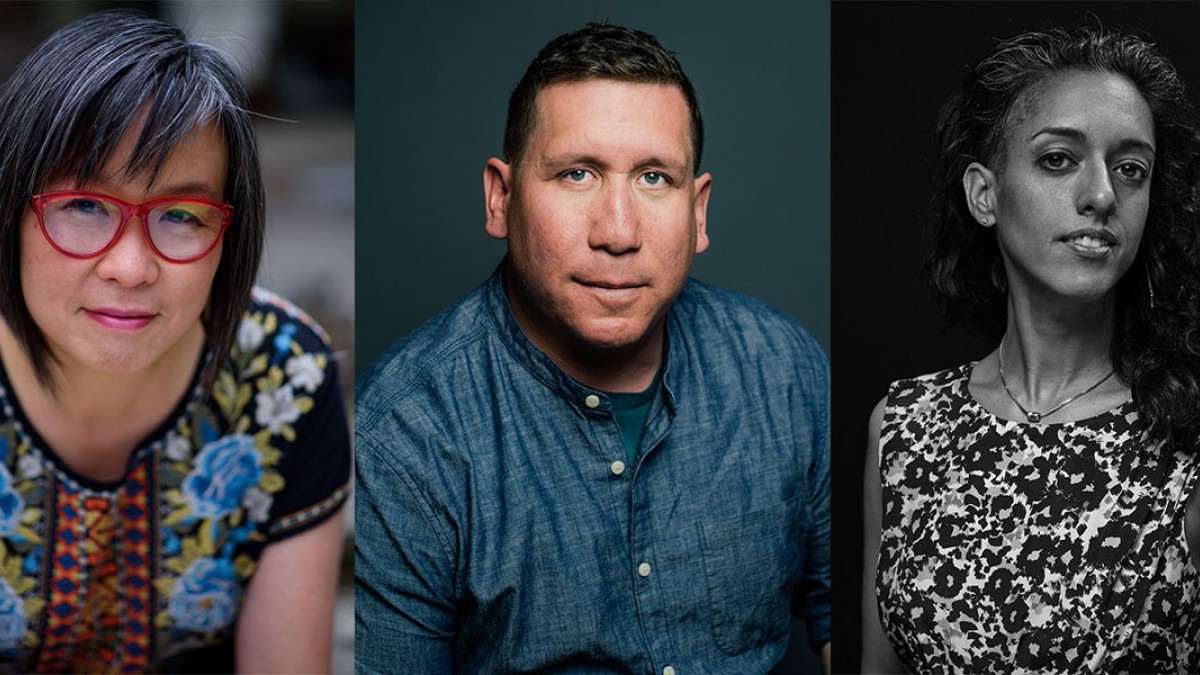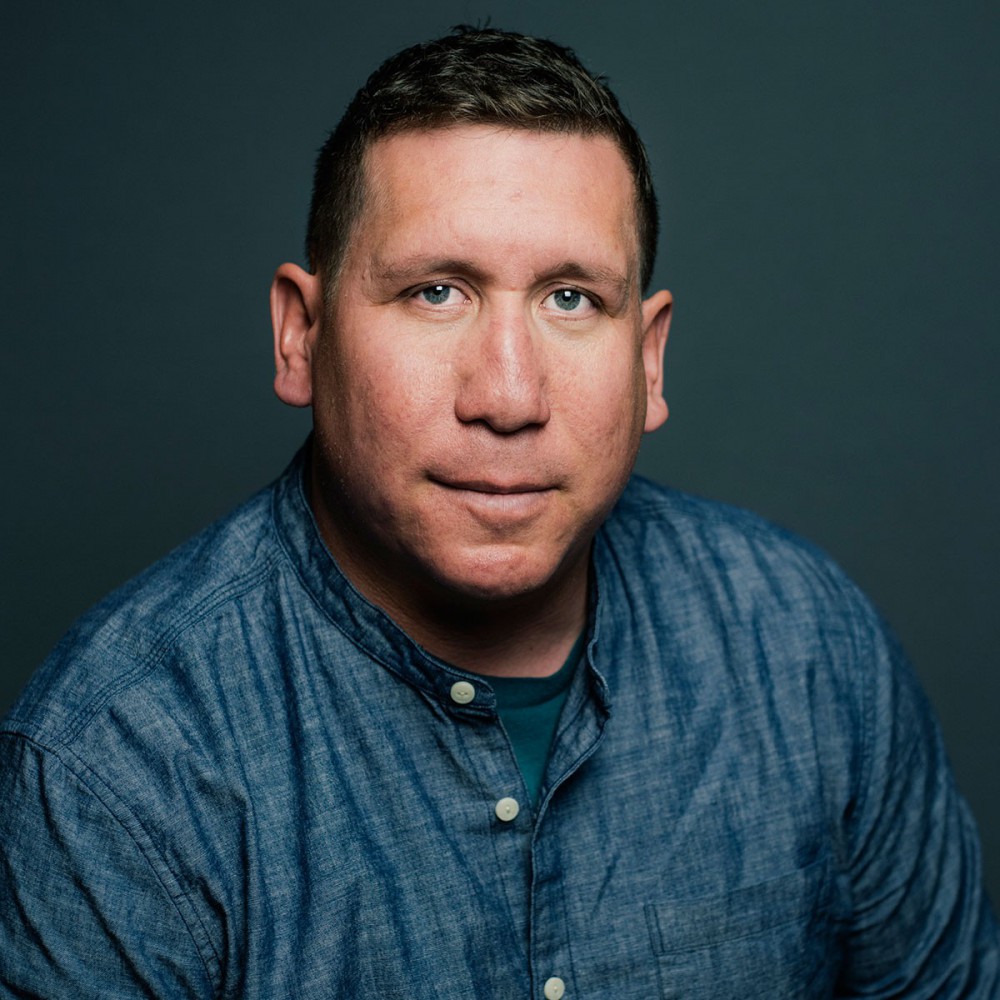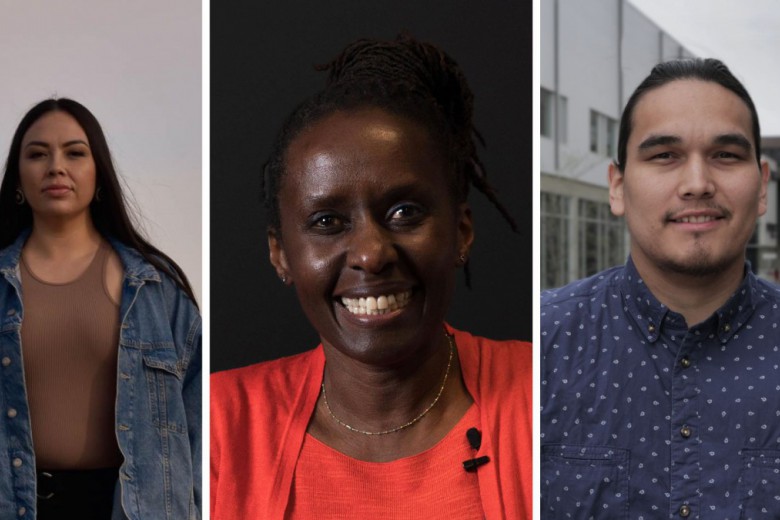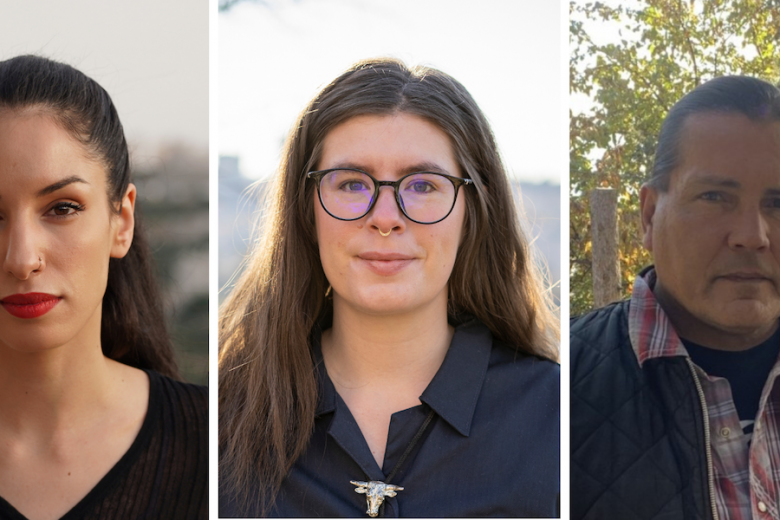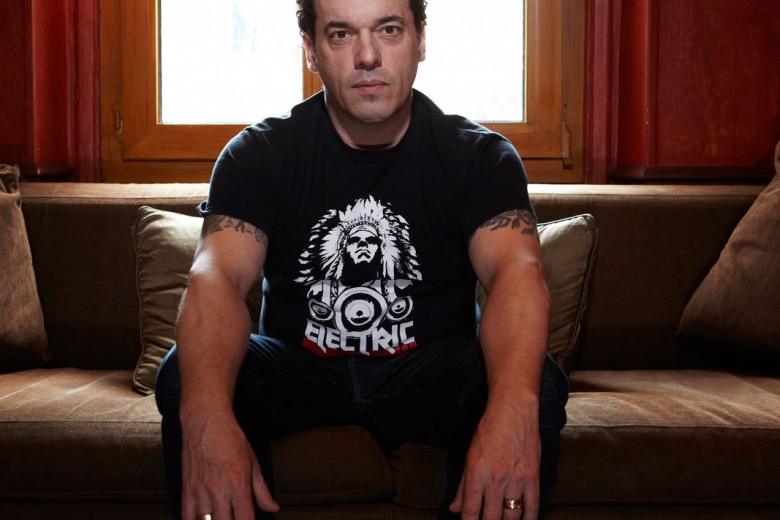Author Toni Cade Bambara famously wrote, “As a culture worker who belongs to an oppressed people, my job is to make revolution irresistible.” That idea is at the heart of Briarpatch’s Writing in the Margins contest. This year, the contest turns 10 – a decade of inviting our readers to bring to life issues of social and environmental justice through poetry, photography, and creative non-fiction.
We’re extremely lucky to have a kick-ass panel of judges for the contest’s 10th birthday: Larissa Lai judging creative non-fiction entries, Pat Kane judging photography entries, and Sonnet L’Abbé judging poetry entries. Briarpatch spoke to Lai, Kane, and L’Abbé about the role of art in social movements, working through a pandemic, and what they think is overrated in art.
You have until December 1, 2020 to enter the contest – details on how to enter are over here. It costs $25 to submit (which also buys you a one-year subscription to Briarpatch) and we have bursaries that allow 10 low-income artists to submit for free. Winners are published in Briarpatch Magazine and receive $500 in prizes; runners-up are published on briarpatchmagazine.com and receive $150.
Judges
Poet, critic, and novelist Larissa Lai has written seven books: Sybil Unrest (with Rita Wong); Automaton Biographies; Iron Goddess of Mercy; Slanting I, Imagining We; When Fox Is a Thousand; Salt Fish Girl; and The Tiger Flu. Involved in cultural organizing, experimental poetry and speculative fiction communities since the late 1980s, she has received the Jim Duggins Outstanding Mid-Career Novelist Prize, the Lambda Literary Award for Lesbian Fiction, the Astraea Foundation Emerging Writers’ Award, and has had two works included on the Otherwise Honor List. She holds a Canada Research Chair at the University of Calgary, where she directs the Insurgent Architects’ House for Creative Writing.
Pat Kane is a photographer in Yellowknife, Northwest Territories. Pat takes a documentary approach to the stories impacting Northerners, with a special focus on Indigenous issues and empowerment. He’s the co-founder and president of the Far North Photo Festival, a platform to help elevate the work of photographers in under-represented parts of northern Canada. He’s also part of Natives Photograph and the Boreal Collective, and is a 2020 World Press Photo Joop Swart Masterclass participant. Pat identifies as mixed Indigenous/settler and is a proud Algonquin Anishinaabe member of the Timiskaming First Nation (Quebec).
Sonnet L’Abbé is a mixed-race Black writer, professor, organizer, and emerging musician of Afro-Guyanese, Indo-Guyanese, and Québecois ancestry, and the author of three collections of poetry: A Strange Relief, Killarnoe, and Sonnet’s Shakespeare (which was a Quill & Quire Book of the Year for 2019 and shortlisted for the Dorothy Livesay Poetry Prize). L’Abbé lives on Vancouver Island and is a professor of creative writing and English at Vancouver Island University.
What do you think is the role of writing or photography to social movements? When was a time when you felt like your creative work has been part of a movement?
Larissa: Writing can help shape the direction of social movements by showing us the worlds that might emerge depending on the directions we choose. It can also help provide a language for social movements. This is particularly important because language deeply shapes the ways we understand ourselves. For instance, it makes a world of difference whether I call myself “Asian” or “Oriental” because there are histories attached to these words. Both are fraught, but in different ways – “Oriental” belongs to the 19th century and romanticizes people who look like me while diminishing us at the same time. “Asian” belongs to the 20th and 21st centuries and describes geographies as imagined by Western imperialism, though it’s also used with positive intent by progressive writers, thinkers, and organizers. As another example, it makes a difference whether I call myself “human” or “animal,” though of course I am both. The stories we tell are shaped by the language we use. And the stories we tell and the language we use shape the worlds that we build. No one knows this better than the poets, fiction writers, and storytellers. Since so much of social movement is attached to feeling – whether of anger, love, grief, fear, indignation, or hope – it’s important that we understand how our feelings are being directed by the language and stories that surround us and propel us toward or away from action. Writers can direct action, or show us how the stories are directing us in ways that might not be so helpful. Writers can also direct social feelings, though, so it’s important to be able to read and write critically.
In response to your second question, my writing has always been part of several movements simultaneously. In relation to Asian Canadian justice movements, my first novel, When Fox Is a Thousand (Press Gang, 1995, available since 2004 through Arsenal Pulp Press), was one of the early contributions to the genre. I think at the time, just to be there making work in the public eye made me part of the movement. I’m not a sloganeer and probably never will be. (Never say never, though! These are dire times!) I still think being here to “represent” is important. More important, though, and harder to get heard, is the capacity to see, illustrate, and work through the contradictions that social movements invariably produce. So this ties your second question back to the first. I think writers have a responsibility to offer the fullness of what they see and hear in a way that thoughtful readers – both activists and ordinary people – can take on board in order to imagine with compassion, nuance, and intelligence the work that needs to be done and the futures that might be built.
"Since so much of social movement is attached to feeling – whether of anger, love, grief, fear, indignation, or hope – it’s important that we understand how our feelings are being directed by the language and stories that surround us and propel us toward or away from action."
Pat: Photography has the ability to impact social changes in our world. From documenting recent issues like COVID-19 to Black Lives Matter, there is a change happening in how our stories get told and who has the responsibility to tell these stories. It is also important for photographers to be allies for each other and encourage those in under-represented areas to tell their own stories from their own perspectives.
Sonnet: Writing can play so many roles in social movements: new information, especially online, can fuel action; personal stories can build solidarity and community as we see how wider circumstances are lived individually; academic research can describe the shared concerns of writers; fiction and poetry help us return to our own imagination and beauty when the world wants to commodify or erode our experiences of joy or commitment. Because I speak to the experience of racialized/mixed-race/Black personhood in a feminized body, on occupied territories, and have aimed to speak truth to/about white supremacy, the critique of colonial ideology in my poetry is, I hope, supportive to others who work to see how these power structures work in language and manage their impacts.
All three of you make work that I’d describe as anti-colonial – both in content and in form. How do you work against the colonial scripts of your chosen mediums and genres?
Larissa: The simplest and most obvious way I work against colonial scripts is in making complex and nuanced representations of Asian, Black, and Indigenous people as well as GBLTQ2S people, and especially people who inhabit more than one marginalized identity category. However, though practices of representation are part of both the colonial and the anti-colonial project – a battleground on which the struggle is waged – anti-colonial work doesn’t stop there. More important is tracing the histories and memories of marginalized people and the structures of feeling that go along with them. This task is ultimately impossible, but nevertheless one can try. And the attempt is a big part of what matters.
Pat: I try to tell stories that are important to Indigenous people and movements. I feel a responsibility not only to tell captivating stories, but to do it with integrity and to amplify the messages that Indigenous people want to share. We are so used to seeing visual stories from a settler perspective, so it is also important to give space for other artists to share their stories.
"I feel a responsibility not only to tell captivating stories, but to do it with integrity and to amplify the messages that Indigenous people want to share."
Sonnet: I struggled to come up with a way to represent, in language, the emotional and intellectual paradox of trying to use a colonial language to think outside of that language. In Sonnet’s Shakespeare I chose to work with Shakespeare’s sonnets as a source text because Shakespeare is the icon of the English literary canon and I have, obviously, a deeply personal relationship to that form that includes experiences of joy, antagonism, respect, role-modelling, indoctrination, and disillusionment. The process of writing my own experience “over” and “through” Shakespeare, in order to erase his presence at the centre of the literary tradition that I grew up in, was a poetic engagement with my instruction by colonial institutions and aesthetics, an attempt to raise my present, embodied voice up and over what came before, as well as to model dynamics of resistance and de-monumentalizing.
How has the pandemic affected or shown up in your work?
Larissa: Astonishingly, it has. My most recent novel, The Tiger Flu, published right before the COVID pandemic, was about a virus with animal origins in China (tigers, though, not bats), that spreads around the world and radically changes the society for both better and worse. It also foresaw the intensification of our lives online, though in The Tiger Flu, people upload their consciousness to the internet in order to leave their flu-vulnerable biological bodies behind. Cure plus immortality rolled into one! Good solution, no? Except that Donald Trump might take this seriously….
Pat: I’ve done a series of works related to COVID-19 and its impact (or potential impact) on northern Canada for The Atlantic, Maclean’s, and Canadian Geographic, among others. Our communities are extremely vulnerable to any spread of the disease because we have small, isolated communities that rely on a limited health-care system in the North. The main message of my work is that it is important to protect one another.
"I experienced a kind of profound psychological relief, for the first weeks. I wondered why. But I think it was about the break from engaging the white supremacist reality ... of my workplace and of the relatively rural, small town I live in."
Sonnet: It hasn’t affected my public writing too much yet. One thing I thought about during lockdown was how much room white society gave itself to be stressed and anxious and to not be productive, because of the mainstream acknowledgement of this collective stress. Seeing all that messaging really gave me perspective on the acknowledgment I had NOT seen for the collective, ongoing stress of anti-Blackness and other racisms as an environment we emerge into every day and one that treats us as toxic/contagion/harmful/to be kept at a distance. I experienced a kind of profound psychological relief, for the first weeks. I wondered why. But I think it was about the break from engaging the white supremacist reality (and by that I mean the normalized sense of peace and civility within nearly all-white environments/institutions on the territories of Coast Salish peoples) of my workplace and of the relatively rural, small town I live in. Then the murders of Ahmaud Arbery, Breonna Taylor, and George Floyd brought the reality of those ongoing stresses – lived so particularly by Black people in the United States and compounded by COVID – to the forefront of global awareness. The acute polarization of my sense of social being that I experienced in those weeks is too much to fathom yet. How the events of the past few months, which have shifted my relationship to myself and my health and my communities, may show up in my work, is yet to be seen.
What are you working on right now? How is it going?
Larissa: I had been working on a sequel to The Tiger Flu, but when the pandemic hit, I was overtaken by an idea for a novel about the Japanese occupation of Hong Kong in the early 1940s. I’m particularly interested in the uneven cosmopolitanism of Hong Kong at the turn of the last century. There were people there from all over the world, including Black and Indigenous peoples. I'm interested in what our relationships looked like then, and also what they were like beyond the container of the state. Many well-known writers passed through, too, and wrote about it. The war, of course, was devastating. But there were friendships and alliances in so many interesting directions. Not all of them ended well, but that’s fascinating too. The occupation was brutal, though. It was a very difficult time, though the difficulty was different from the one we are living through. But I think there was something about the mindset of the current pandemic that put me in the mood to confront that difficulty. I’m also wrapping up a poetry book called Iron Goddess of Mercy, which is a series of letters to all the furies that are possessing me now. It’s coming out off of Arsenal Pulp Press in spring 2021.
I have many writing friends who are struggling to write right now, because the time is so weird. I seem to be inhabiting both this historical moment and the 1940s, and the writing wants to come. I’m grateful for this. I’ve had my share of writer’s block in this life, so I don’t take it for granted.
Pat: I’m currently working on a project about indigenization for World Press Photo. The story will focus on how Indigenous people in the Northwest Territories are reclaiming their sense of identity through learning traditional skills, creating art, using Traditional Knowledge in scientific studies and becoming stewards of their lands. It is a very large project for an international audience – it is both daunting and exciting. I look forward to sharing this work in the coming months.
"I wrote some songs and the whole field of non-semantic musicality opened up. I’m exploring hip-hop research essays, and roots-country Afropessimist, sexual-violence-survivor blues."
Sonnet: My last project was so dense, intertextual, and conceptual that I exhausted myself, so in the past couple of years I’ve been exploring whether I could make lyric verse that operates in its most direct, accessible form: as song. I wrote some songs and the whole field of non-semantic musicality opened up. I’m exploring hip-hop research essays, and roots-country Afropessimist, sexual-violence-survivor blues. My challenge is working and experimenting with the limits of my geography: see rural town, above! If I can even access a local live audience, it’s sure to be 90-100 per cent white people and probably at least 50 per cent retirees. It makes it hard to know how a person who shares some of the experiences I like to talk about in my work would respond to my vibes. I don’t know what the song version of “submit to literary magazines like Briarpatch” is! But the journey of gaining respect in the local blues scene (think boomer Stevie Ray Vaughan fans) has been profound. I’m writing non-fiction, as I go, about the experience of learning songwriting and singing as a window into thinking about my own poetics: about voice; about Black women’s role in the birth of rock ’n’ roll and in blues and how rock/country are coded as white genres; about African rhythms, percussion, and the feeling/knowing/healing body; about Eurocentric divisions between song and poem; about where I, as a daughter of a Guyanese woman, sit in relation to dub/reggae/calypso and other forms of voicing. This is stuff Lillian Allen and d’bi.young anitafrika have embodied in their work forever. I’m just coming at it my own way.
Rapid-fire round
What’s the first piece of art you ever made?
Larissa: An egg box filled with sand when I was two.
Pat: I was encouraged to pursue the arts from a very early age, so I did a lot of drawing and painting as a child.
Sonnet: Little ceramic man made of extruded clay discards from my dad’s studio.
Most recent piece of writing or art that made you cry?
Larissa: Lee Maracle’s Memory Serves, an essay by Karina Vernon called “The Outside of the Inside,” and Kai Cheng Thom’s I Hope We Choose Love. Some of these aren’t that recent. I don’t cry easily.
Pat: My cousin Karen McBride’s novel, Crow Winter, is dedicated to her father, and the main character is named after my late mother.
Sonnet: Sirma Bilge’s recent article called “The fungibility of intersectionality: an Afropessimist reading.” I came to it from Rinaldo Walcott’s Twitter. Some parts were just too fucking true and reminded me of all I do not feel safe to express.
What do you think is overrated in art?
Larissa: Memoirs.
Pat: Doing artwork that is based on someone else’s work. Artists should find their own voice and pursue their own style.
Sonnet: Wealthy patrons’ ability to be influenced?
What do you eat a lot of when you’re working?
Larissa: I eat chocolate the way the previous generation used to smoke.
Pat: Pizza.
Sonnet: Pretzels and chocolate chips.
How do you know when you’re done?
Larissa: I don’t. I need to be told.
Pat: I never truly feel like I’m done a project; there are always things I can edit or improve on.
Sonnet: I feel it. When the work satisfies my bodymind, it kind of goes *ting!*
Your most recent cause for celebration?
Larissa: The Jim Duggins Outstanding Mid-Career Novelist Prize.
Sonnet: I finally wrote a song that gave me the above feeling. That same week I got asked to perform music by people who don’t give a shit that I’m a prof or writer of books. The song landed, they paid me, and another musician praised my chords.
What’s your number-one tip for writers or photographers submitting to the contest?
Larissa: How about three? 1) Submit your freshest and most surprising work. 2) Polish! Only include spelling errors on purpose. 3) Submitting is more important than winning.
Pat: Submit what you feel is your best work and do not be bothered with what someone expects – stay true to your voice.
Sonnet: Be brave and write what your body wants to say. Aim for the visceral, urgent, and honest, and let your style emerge from that, rather than aiming for style.


